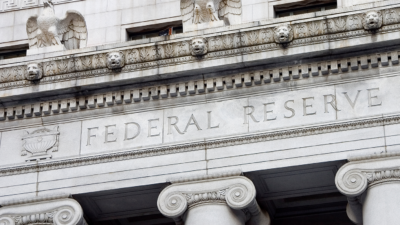When the economy was in the dumps, people wanted to know when it was going to get better. Now that the economy is humming again, people want to know when it will go back down in the dumps. The answers floating around right now range from “never” to “tomorrow”, which nicely accommodates whatever narrative you are trying to push. Clearer heads seem to be landing on mid-to late 2019 or 2020 for the likeliest timing of the next recession. Does anyone really know? Of course not. Well, maybe the Trilateral Commission, what with the advanced thinking machines they got from the U.F.O.’s, but earth-bound economists can do nothing more than guess. For my part, the best I can do is look at what has been and extrapolate from there…
To do that, let’s look at the old Recovery Index, which I created in 2008 in an attempt to figure out just how “in the hole” we were economically in Southern Nevada, and to try to predict when we could expect demand for commercial real estate to pick up. I took 2005 as my benchmark — the “100” of the index — and then extended things back to 1996. That means the index now covers a 20-year span, measuring several factors that contribute in one way or another to demand for commercial real estate.

The graph shows slower, steadier growth from the depths of the Great Recession to the present. The factors we track have the index nearly matching the peak experienced in 2006. In fact, we would have exceeded the peak if not for one key factor that lags behind all of the others — new home sales. Before you curse the home builders and buyers for not pushing us over the goal line, though, keep in mind that this is not necessarily a bad thing.
I opened this article looking at when the next recession may appear. The more important question is what kind of recession it will be. For our purposes, we will consider that there are two basic sorts of economic recessions. The first we will call a “manufacturing recession.” These are the most common and regular sort of recessions. They are usually caused by manufacturers getting too far ahead of consumers, building up their inventories and then having to lay off employees while they sell off their extra inventory. Manufacturing recessions tend to be short, as a recession of this sort corrects itself without too much trouble. People pull back their money for a bit, extra inventory is sold off, things get back to normal and the economy recovers.

The last recession, however, was not a business cycle recession. It was a financial recession not unlike the Great Depression. In a recession of this sort, millions of people and many huge corporations make very risky investments (i.e. bets) on the economy and fail en masse. The Great Depression of the 1930’s was largely caused by people buying stock on credit with the expectation that the stock would increase in value quickly enough that they could sell it at a profit and pay off their loan before it came due. Sound familiar? The Great Recession took this brilliant idea and applied it to real estate. In either event, the losses were massive and widespread, and the time it took to recover was extended.
So, what are we expecting in 2019/2020 — a nice, neat manufacturing recession, or a deep, dark financial recession? Again, the experts are divided, with probably most expecting a light recession of the manufacturing variety, and a minority warning that the potential for a financial recession exists and may come to pass. Again, there’s no sure way of knowing. Overall economic numbers look pretty good. A lack of workers to fill job openings suggests that economic growth moving forward might be moderated, and wages should improve.
There are a few things to consider when predicting the impact of the next recession on Southern Nevada. The first is that the Valley is no longer “recession proof.” That concept, which was never entirely accurate to begin with, stemmed from very high levels of in-migration into the area. These new citizens, often bringing built-in incomes, helped to increase the size of the local economy even while the economies of other areas were shrinking. In-migration into Southern Nevada is not as strong as it used to be, so we can expect to experience the next recession in much the same way as the rest of the United States.
On the other hand, the terrible impact of the last recession on Southern Nevada was caused by the aforementioned real estate speculation, and that is a danger the Valley is not currently facing. That would be better news if the next financial recession was likely to come from residential real estate speculation. The fact is, the cause of the next financial recession will probably be debt — of individuals, businesses and governments. The world is awash in debt, and more than it can reasonably pay back. Defaults in one area of the global economy could very well spread to other areas, thus creating another large-scale financial recession.
That leaves us with the final question about the future that will remain unanswered…how do we solve this problem?
John manages the research and GIS (Geographic Information Services) departments at Colliers’ Las Vegas office where he collects, analyzes and reports on the commercial real estate market of Las Vegas, NV and has built the research department at Colliers International’s Las Vegas from the ground up.

 John Stater
John Stater
 Steig Seaward
Steig Seaward
 Aaron Jodka
Aaron Jodka